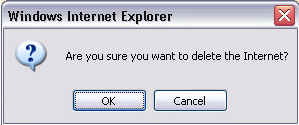AJAX (Asynchronous JavaScript and XML) is a newly coined term for two powerful browser features that have been around for years, but were overlooked by many web developers until recently when applications such as Gmail, Google Suggest, and Google Maps hit the streets.
Asynchronous JavaScript and XML, or Ajax (pronounced "Aye-Jacks"), is a web development technique for creating interactive web applications using a combination of XHTML (or HTML) and CSS for marking up and styling information. (XML is commonly used, although any format will work, including preformatted HTML, plain text, JSON and even EBML).
The Document Object Model manipulated through JavaScript to dynamically display and interact with the information presented
The XMLHttpRequest object to exchange data asynchronously with the web server. In some Ajax frameworks and in some situations, an IFrame object is used instead of the XMLHttpRequest object to exchange data with the web server.
Like DHTML, LAMP, or SPA, Ajax is not a technology in itself, but a term that refers to the use of a group of technologies together. In fact, derivative/composite technologies based substantially upon Ajax, such as AFLAX, are already appearing.
Ajax applications are mostly executed on the user's computer; they can perform a number of tasks without their performance being limited by the network. This permits the development of interactive applications, in particular reactive and rich graphic user interfaces.
Ajax applications target a well-documented platform, implemented by all major browsers on most existing platforms. While it is uncertain that this compatibility will resist the advent of the next generations of browsers (in particular, Firefox), at the moment, Ajax applications are effectively cross-platform.
While the Ajax platform is more restricted than the Java platform, current Ajax applications effectively fill part of the one-time niche of Java applets: extending the browser with portable, lightweight mini-applications.
Ajax isn’t a technology. It’s really several technologies, each flourishing in its own right, coming together in powerful new ways. Ajax incorporates:
* standards-based presentation using XHTML and CSS;
* dynamic display and interaction using the Document Object Model;
* data interchange and manipulation using XML and XSLT;
* asynchronous data retrieval using XMLHttpRequest;
* and JavaScript binding everything together.








 , you’ll need to turn it on. To do that, right-click an open area of the taskbar. Hover your mouse pointer over Toolbars, then click Quick Launch. The Quick Launch Bar appears on your taskbar.
, you’ll need to turn it on. To do that, right-click an open area of the taskbar. Hover your mouse pointer over Toolbars, then click Quick Launch. The Quick Launch Bar appears on your taskbar.




